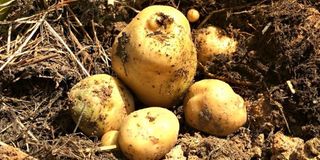Use hermetic bags, metallic silos to avoid crops losses

On August 27, 2017, The Citizen reported that post-harvest food-crop losses are unacceptably high in Tanzania and eastern Africa.
Estimated at between 30 and 40 per cent of harvested crops, the losses are largely attributed to poor handling by smallholders, including processing/sorting, packaging, transportation, storage and marketing.
All in all, post-harvest crop losses have a devastating impact on such life’s necessities as nutrition and food security, problems that mostly plague vulnerable population segments, especially women and children in abjectly-poor households.
But, this isn’t to say that the malady is confined to least-developed-cum-developing countries; it’s a global issue that knows no bounds, be they geographical, cultural or whatever bounds!
Perhaps a notable difference is that the post-harvest crop losses which mostly occur in developed countries are more often than not in the form of food waste from the tables.
In any case, the type and extent of post-harvest losses depend on the kind of crops involved in the post-harvesting chain. For example, perishables like fruits and vegetables are bound to get spoilt and otherwise degraded faster than (say) grains and legumes...
Crop harvest losses manageable, avoidable
Generally, the phrase ‘post-harvest loss’ covers losses – both quantitative and qualitative – from the harvesting stage to consumption, including food waste at the kitchen and dining table levels. But, most of the losses are avoidable at best. They are nonetheless manageable to the extent of being tamed and otherwise controlled.
Control measures include – but are not limited to – harvesting farm crops at the correct maturity stage; grains threshing should be done properly, and the grains thoroughly dried before being stored; storage areas should be functionally sanitized and well-ventilated; damaged crops should be discarded early to avoid harbouring pathogenic microorganisms, and quality packaging is done according to the shape, weight and nutritional value of the crop.
With specific regard to Tanzania, we are most gratified to note that the fifth-phase government of President John Magufuli, working in close collaboration with its partners-in-development, has already put strategies to reduce post-harvest losses even as it boosts farmers’ incomes.
As reported by The Citizen on August 27, 2017, the UN World Food Programme (WFP) teamed up with six other multilateral global organisations to form a Farm-to-Market Alliance (FtMA). The ‘Magnificent Six’ are Agra, Syngenta, YARA, RaboBank, IFC and GrowAfrica.
FtMA is part and parcel of the four-year WFP Country Strategic Plan (2017-2021) intended to (among other things) provide some 250,000 Tanzanian smallholders increased access to agricultural markets by June 2021. This should also go a long way in reducing post-harvest crop losses through the use of improved harvesting and post-harvest handling and storage.
Among the storage facilities proposed are hermetic bags and metallic silos with crops storage capacity of up to 3,000kg.
We’re of the considered view that the government could play a significant role in this by easing availability of affordable metallic silos and hermetic bags. For starters, it should do away with taxes and other levies/barriers to domestic production of the items – as detailed in The Citizen yesterday.




